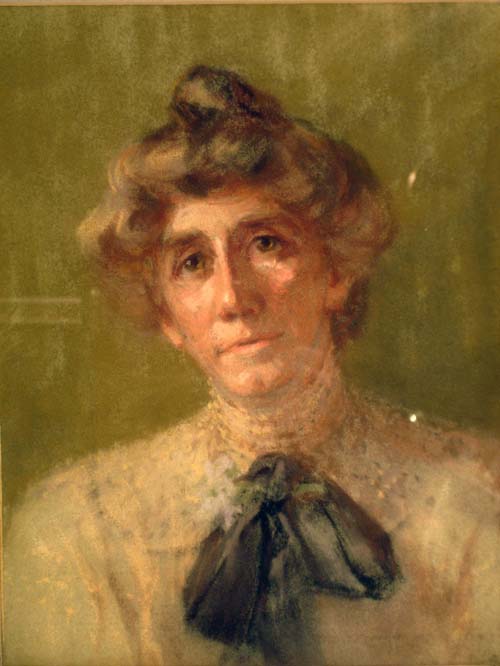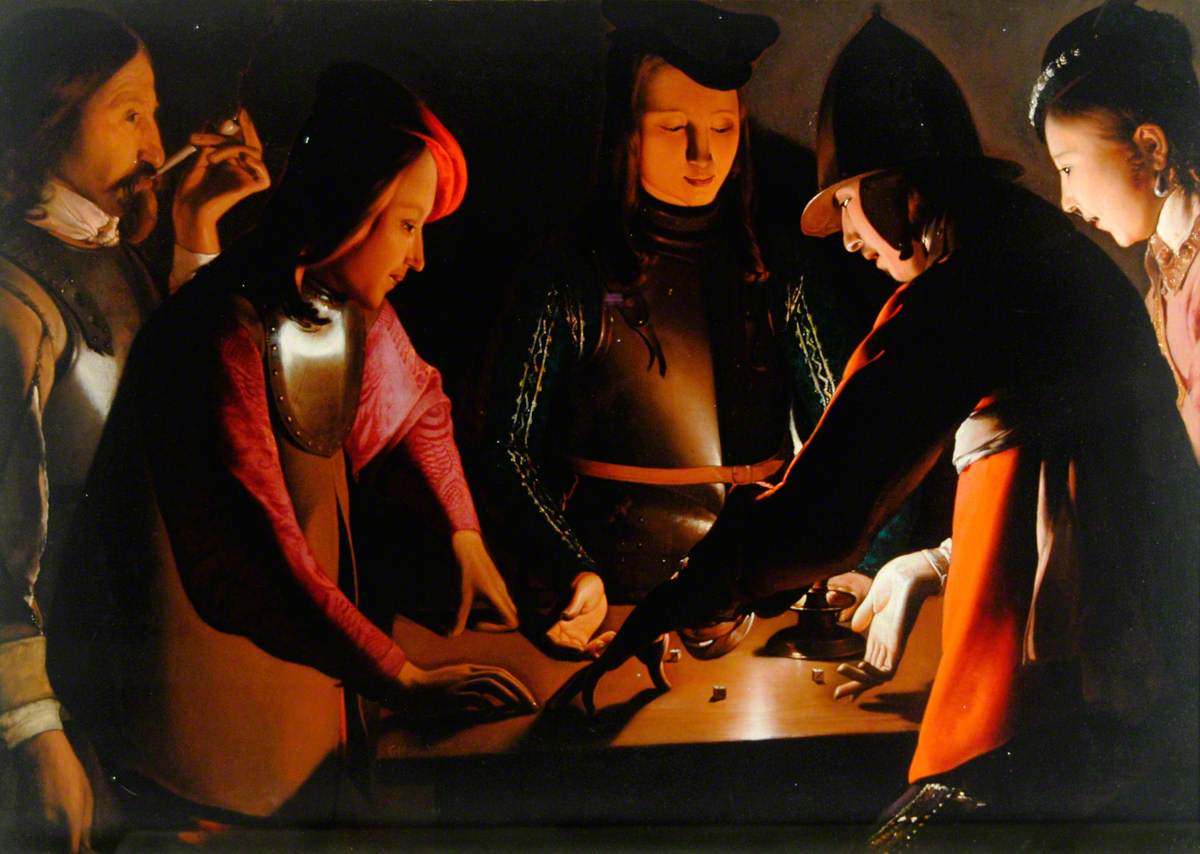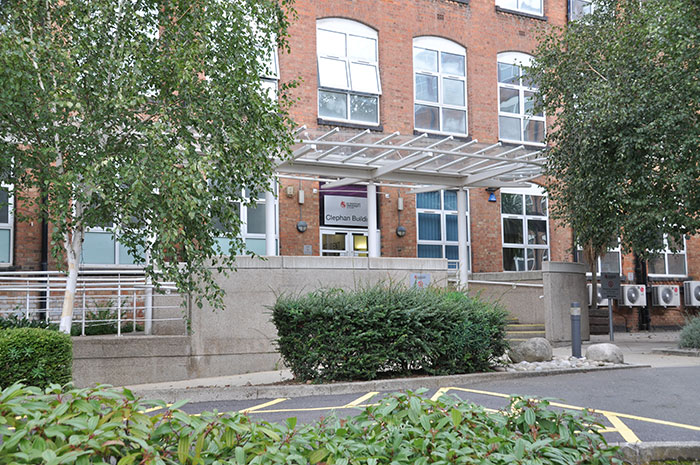Wednesday 29 October 2025
The exceptional Miss Annie Clephan
LAHS Committee member Caroline Wessel explores the life of Annie Clephan, the pioneering scion of a well-known Leicester family.
This year, members of the Society are having a number of lecture meetings at the Clephan Building at De Montfort University. But how many of us know what ‘Clephan’ means, or, if a family name, who they were?
The Clephans were an important part of late Victorian and early twentieth-century life in Leicester. Edwin Clephan (1817-1906) was the son of a Stockton baker. He moved to Leicester where he became a bank clerk and was eventually appointed bank manager of what was then Paget’s Bank on Leicester’s High Street that was sold in 1895 to Lloyds Bank.
Edwin was involved in many local organisations, such as the Literary and Philosophical Society, Leicester Society of Artists and the Art Gallery Committee. He was a Justice of the Peace and an active Presbyterian who served on the Vestry for 56 years. Clephan was also a member of the Leicester School of Art Committee from 1882 until 1905, steering it through the transition from independent organisation to Council control and seeing the construction of the first wing of the Hawthorn Building, now part of de Montfort University.
But what we are greatly interested in is the life and achievements of Edwin’s daughter Annie Elizabeth Clephan (1854-1930). She was a steadfast and self-determined woman but lived during a time when most women, especially those of higher classes, were expected just to marry and be dutiful wives to their husbands. However, Annie went against tradition and decided not to marry, instead devoting herself to her work and thus became a leading member of Leicester society.

Annie was particularly involved in Leicester’s School Board and devoted herself to establishing better care for deaf, dumb and mentally disabled children. In addition she was rather forward-thinking for her time in terms of children with special needs. For in 1903, Annie and her colleagues established the After-Care sub-committee of the Education Committee. It aimed to contact the children who have special needs to attend the schools at Milton Street, Elbow Lane and Willow Street. Furthermore, it included two to three home visits per year to maintain contact and this continued for twelve years until the committee was handed over to the local authority.
Annie Clephan sat on the Technical and Art Schools Committee from 1903 till 1929, and on her death left £500 to establish a scholarship for it. She shared her father’s interest in art, and during the last years of his life she took over his duties on the Leicester School of Art Committee.
Annie joined her first society when she was only 18 years old in 1872 - the Leicester Ladies Reading Society (LLRS). It was founded in 1869 by a group of local women and aimed to provide an opportunity for more concentrated study. Annie became secretary of the Society for 1880/81 and president in 1885/86, 1896/97, 1905/06 and again in 1919/20, often sharing her travel experiences with the members of the Society. The Clephan family began their long association with the Reading Society when Annie’s sister, Miss Jenny Clephan (afterwards Mrs Alfred Paget) was elected a member in 1871. She was followed the next year by her sisters, Mary and Annie, the latter serving twice as its President.
And when the LLRS’s meetings were at Miss Annie Clephan’s home on Regent Road and a book of a certain date had been studied: “occasionally her musical gift would be used to illustrate that aspect of a period, either by her own beautiful piano playing or by enlisting the powers of her friends with voice and violin. We shall always remember the meetings in the picture-lined drawing-room and the hospitable dining-room table around which we gathered in the interval.”
And here I have a proud personal connection with Annie; for my grandfather, Ernest Gee, a well-known musician, composer, pianist and supporter of all Leicester’s early music societies, frequently recorded in his diaries (written up for 41 years!) that he ‘Attended a Musical Evening at Miss Annie Clephan’s.’
Also, on a personal note, my family has been trustees of Leicester Charity Organisation Society (now Charity Link) for four generations since 1907 and their annual accounts show Miss Annie Clephan giving them generous donations every year. So she would almost certainly have been known to my great-uncle Percy Gee, who was LCOS Finance Secretary for over forty years.
In addition Annie was a member of the Leicester branch of the National Council of Women. This was because she believed passionately in women’s rights to vote and to have an education, and so served as the President of the Leicester Women’s Liberal Association, an organisation that defined itself as ‘totally separate and independent of male Liberalism. It regarded its autonomy as being vital to improving women’s position in society.’
In December 1891, the Leicester Ladies Liberal Association was reported as being ‘disgusted at only getting one woman amongst the Liberal nine’ selected to serve on the School Board. The local newspaper published an article to criticize the result of the election, saying these ‘self-opinionated men should be left to wallow in darkness un-illuminated by a single ray of feminine iridescence’. The following year four Liberal women were elected as Poor Law Guardians though this much aggravated some of the older male Guardians.
Miss Clephan also joined the National Union of Women Workers (NUWW) and was the organizer of its National Conference in 1919 and the secretary of the Standing Committee of its Midland branches. Being President of the National Conference during WWI, they quickly took action on the impact of the war on women’s lives. This led to concern about the morality of women in the town, so the NUWW produced an instructive card on how to maintain morality that was used in factories, Girls’ Club, Mother’s Meetings and so on.
So to summarise - from the years 1907-1913, Annie played a greatly important role in the development of women’s rights and these demanding experiences turned her into a confident public speaker and the leader of the local movement for women’s suffrage.
Annie inherited her father's interest in and actively promoted Art activities. She founded the Clephan Scholarship to help teachers and students of the Leicester School of Art and Technology and in her Will donated her art collections to them. She also bequeathed £200 in her Will to the new Leicester University College, now the University of Leicester, and donated many books to its Library.
Annie’s father, Edwin, had a close involvement with the art scene of Leicester which led him to collect artworks from around the world – the most famous painting in the collection being Georges de La Tour’s ‘The Dice Players’ – but he also collected artworks made by teachers and students of Leicester School of Art. Upon his death his collection was bequeathed to his daughters.

It was Annie’s intention to leave her father’s art collection to the Borough of Stockton, in memory of his birthplace, but there’s reason to believe that some of the paintings she left to Stockton were from her own private art collection.
The DMU Clephan Building name therefore commemorates a prominent and generous Leicester family, but in particular it rejoices in the life of the spirited, energetic and talented Annie Clephan, who did a huge amount for the education, art and culture of Leicester, but as a woman well ahead of her time she greatly raised the profile and self-esteem of women thereby encouraging them to actively take part in women’s suffrage.
So as we pass through the doors of the Clephan Building to attend our next LAHS lecture there, let us remember with pride the life, work and achievements of this exceptional woman – Miss Annie Clephan.
If you enjoyed this blog, why not explore our other blogs about the history of Leicestershire and Rutland here.
Background image: The Clephan Building, De Montfort University.
The Clephan Building, De Montfort University.


